Visited on: 25th June, 2016, 1st September, 2016 and 10th December, 2016.
Location
Sikkal is situated at a distance of about 7 kms from Nagapatinam on the Nagapatinam to Thiruvarur route. From Thiruvarur, it is about 20 kms. There is a railway station in Sikkal (on the Nagapattinam to Thiruvarur line) and this temple is one kilometre away from it.
Other Devara Paadal Petra Shiva Sthalams near this place are – Nagapattinam, Keezhvelur (Keevalur) and Thevur.
General Information
| Moolavar | Sri Navaneetheswarar, Sri Vennai Lingeswarar |
| Ambal | Sri Satyaayadhakshi, Sri Velnedunkanni |
| Theertham (Holy water) | Ksheera Pushkarini, Milk pond (“Paal Kulam” in Tamil), Gaya Theertham, Lakshmi Theertham |
| Jasmine (Malligai) | |
| Pathigam (Hymn) rendered by | Saint Thirugnanasambanthar-1 |
- This is one of the 276 Devara Paadal Petra Shiva Sthalams and 83rd Shiva Sthalam in Chozha Nadu on Southern bank of the river Cauvery (Thenkarai).
- Lord Shiva in this temple is a Swayambumurthi (self-manifested).
- This temple is very famous for its Murugan, who is praised as “Sikkal Singaravelar”.
- “Soorasamharam” is an important festival celebrated in this temple.
- There is a Maragatha lingam here.
- This is one of the Shakti Peedams.
- This temple is counted as one of the Maadak Koils built by King Kochengat Cholan.
- This east facing temple has three corridors and its main tower (Rajagopuram) has 7-tiers.
History of the Temple
This ancient temple is believed to have been built by the Chola King Muchukunda.
There are 8 stone inscriptions in this temple which date back to the periods of kings Jadavarman Veerapandian, Sadasiva Maharayar and Veerabhupathy Achudadeva Maharayar.
The historical name of this place is Mallikaaranyam (Malligai means jasmine plant and aranyam means forest).
There are 28 temples where shrines of Lord Shiva and Lord Mahavishnu are housed in the same complex. Sikkal is one of them.
This temple is under the administrative control of the Hindu Religious and Charitable Endowments Department of Government of Tamil Nadu (HR&CE).
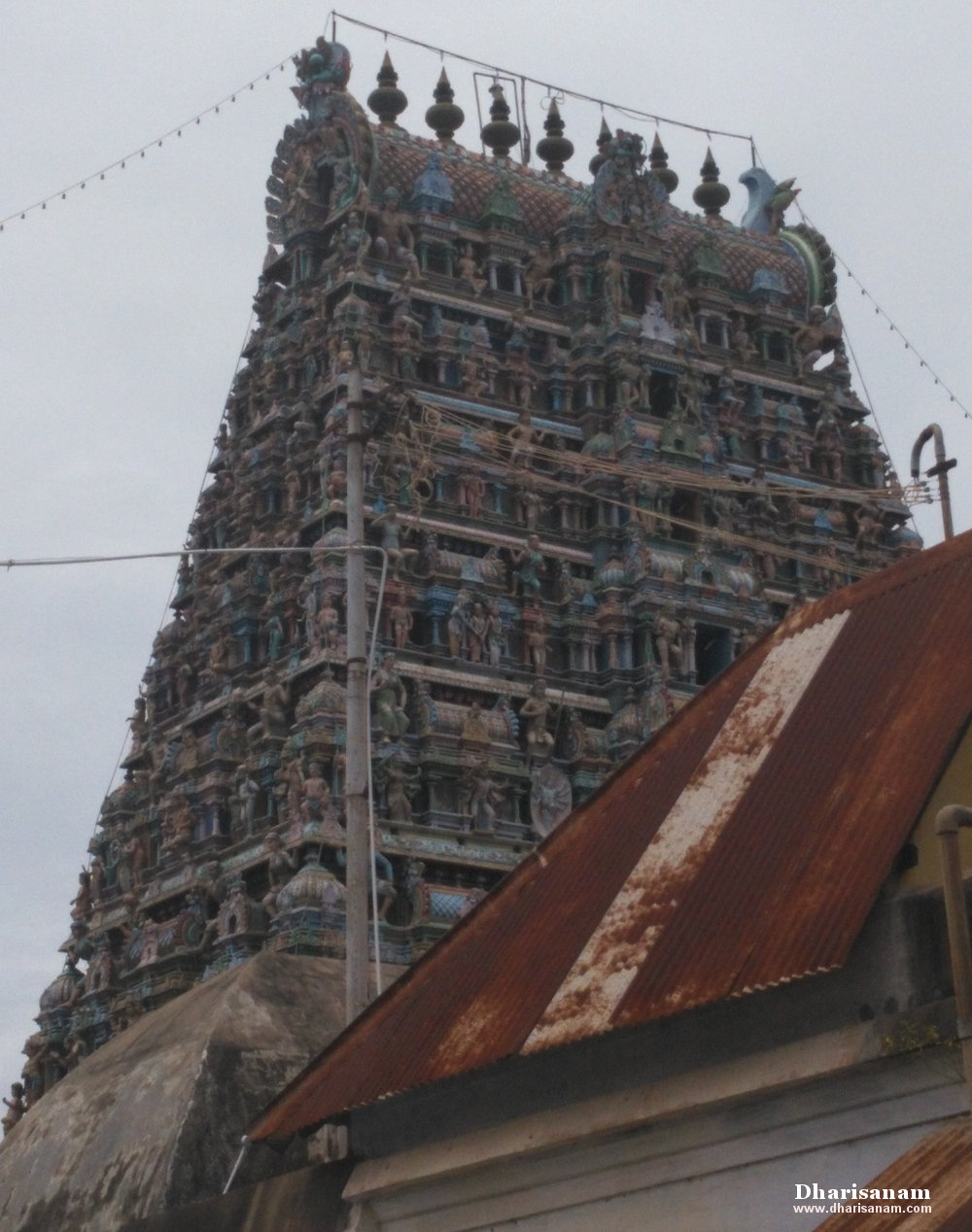


It is said that the idols of Lord Murugan at Sikkal, Enkan and Ettukudi were made by the same sculptor. On the instructions of the Chola King Mutharasan, the sculptor first made a Murugan idol for this temple. This idol was magnificently carved. It is believed that the king did not want the sculptor to make any replicas of this idol so he had the sculptor’s right thumb severed.
The sculptor was then prompted by Lord Murugan in his dream, to create another idol of him for the Ettukudi temple. He followed the instructions that he received in his dream and made the idol without the support of his right thumb. When the idol was completed and installed at Ettukudi temple, King Mutharasan came to know about this. Angered by the sculptor’s act, he blinded him so that he would not be able to create any more sculptures.
However, in another dream he was again prompted by Lord Murugan to create one more idol of him for the Enkan temple. He followed the lord’s instructions and created the third idol. This time he took the help of his daughter. While making the idol, his chisel inflicted an injury upon his daughter and a couple of drops of her blood splashed over his eyes. Suddenly his vision was restored. He uttered the words “oh en kan” (meaning “oh I got my eyes back”). It is believed that the place “Enkan” got its name from this incident.
It is believed that when King Mutharasan heard about this incident, he realised the greatness of the sculptor and visited him to apologize for his mistake.
Legend
Lord Maha Vishnu, Lord Murugan, Sages Naradar, Agasthiyar, Vashistar, Vishwaamitrar, Gautama, Kathyayana, Chola King Muchukuntha Chakravarthi and Kamadenu have worshipped the lord here.
According to legend, once the devas worshipped Lord Murugan requesting him to protect them from the onslaught of demon Soorapadman. Lord Murugan decided to destroy the demon. He obtained his spear (“Vel” in Tamil) from his mother, Goddess Parvathy and proceeded to Thiruchendur to encounter the demon. This event is called “Soorasamharam” and it is celebrated in a grand manner in this temple. Lord Murugan is praised here as “Sri Singara Velan” (the lord holding a spear).
Another legend associated with this temple is that of Lord Mahavishnu. Once the devas approached Mahavishnu and complained about the troubles caused by the demon king Mahabali Chakravarthi and they sought his help. Before venturing out to the court of the demon king Mahabali, Lord Mahavishnu took the “Vaamana avatar” and came to this place to worship Lord Shiva. Lord Shiva blessed him with the power to annihilate Mahabali. Hence, Lord Vishnu is praised here as “Sri Kolavaamana Perumal”. There is a separate shrine for him adjacent to Lord Shiva’s shrine.
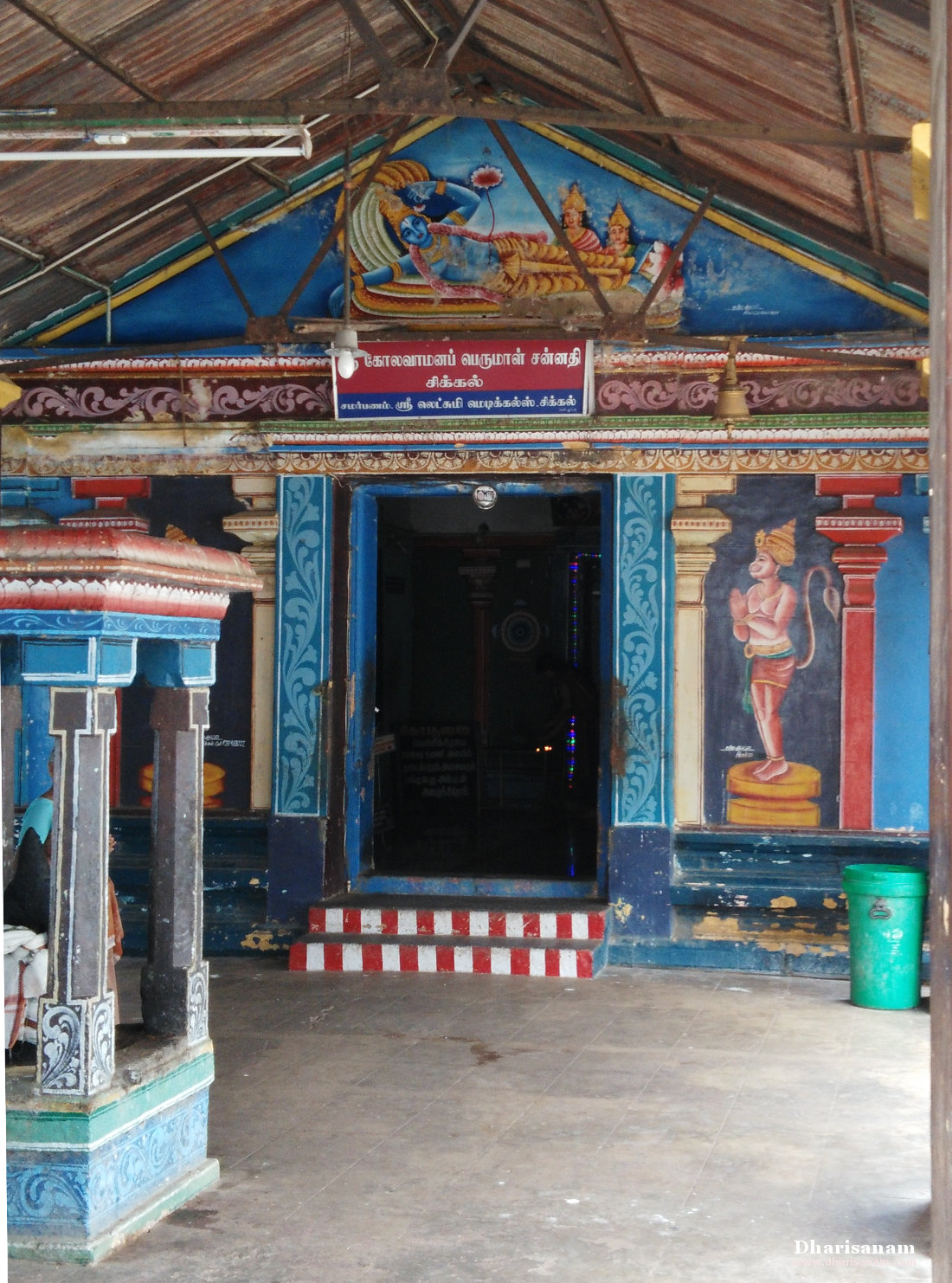
Another legend associated with this temple is that of the divine cow (Kamadhenu). It is believed that once she had consumed meat during a drought. When Lord Shiva came to know about this, he cursed her and turned her into a cow with the head of a tiger. The sorrow-stricken Kamadhenu requested the lord to pardon her.
Lord Shiva advised her to come to this place, take a dip in this temple’s holy tank and offer her prayers. Accordingly, Kamadhenu came to this place and started taking bath. While taking bath, she was restored to her original form and milk from her udders started flowing. The entire tank became a pond of milk (“Ksheera Pushkarini”). Surprisingly, butter also formed here.
At the same time, as per the direction of Lord Shiva, Sage Vashistar came to this place, created a lingam using the butter and offered his prayers. Lord Shiva appeared here and gave darshan to him and Kamadhenu. He also pardoned Kamadhenu. Hence, the lord here is praised as “Sri Vennai Lingeswarar” (“vennai” means butter in Tamil).
It is further believed that the lingam that Sage Vashistar had created got stuck in some jasmine plants. For this reason, this place gets the name “Sikkal” (Sikkal means to get entangled).
Deities in the temple
Other than the shrines of Lord Shiva and Goddess Parvathy, shrines and idols of Sundara Vinayakar, Murugan, Lord Thiyagarajar, Mahalakshmi, 63 Nayanmars, Saptha rishis, Karthikai Vinayakar, Vishwanathar with Visalakshi, Bairavar, Navagraham, Suryan and Chandran can be seen in the main hall and corridors.
In the “koshtam” (place surrounding the sanctum sanctorum), idols of Vinayakar, Dakshinamurthy (without the Sanagathi rishis), Saneeswarar, Lingothbavar (with Vishnu and Brahma on his either side), Durgai and Chandikeswarar can be seen.

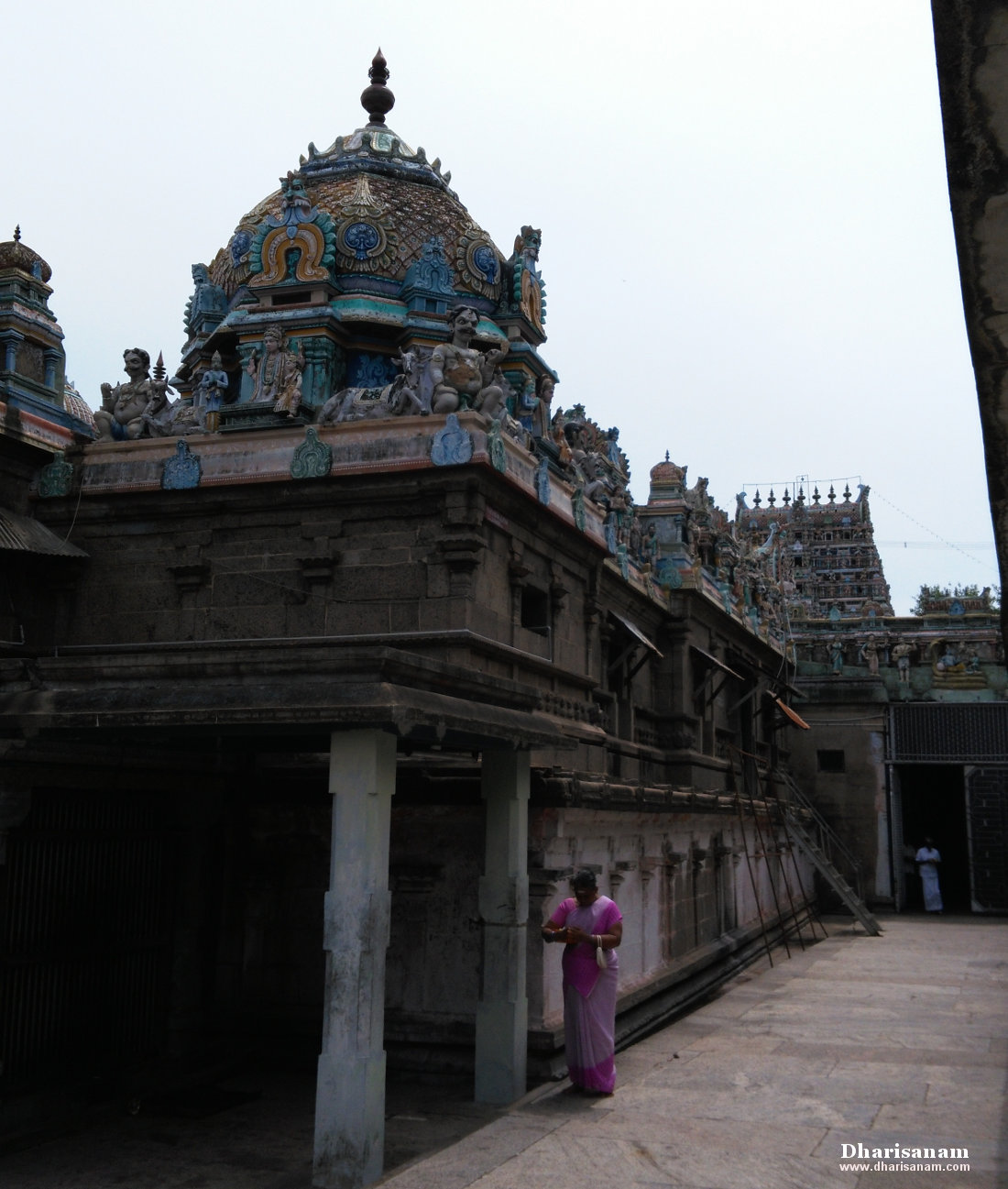
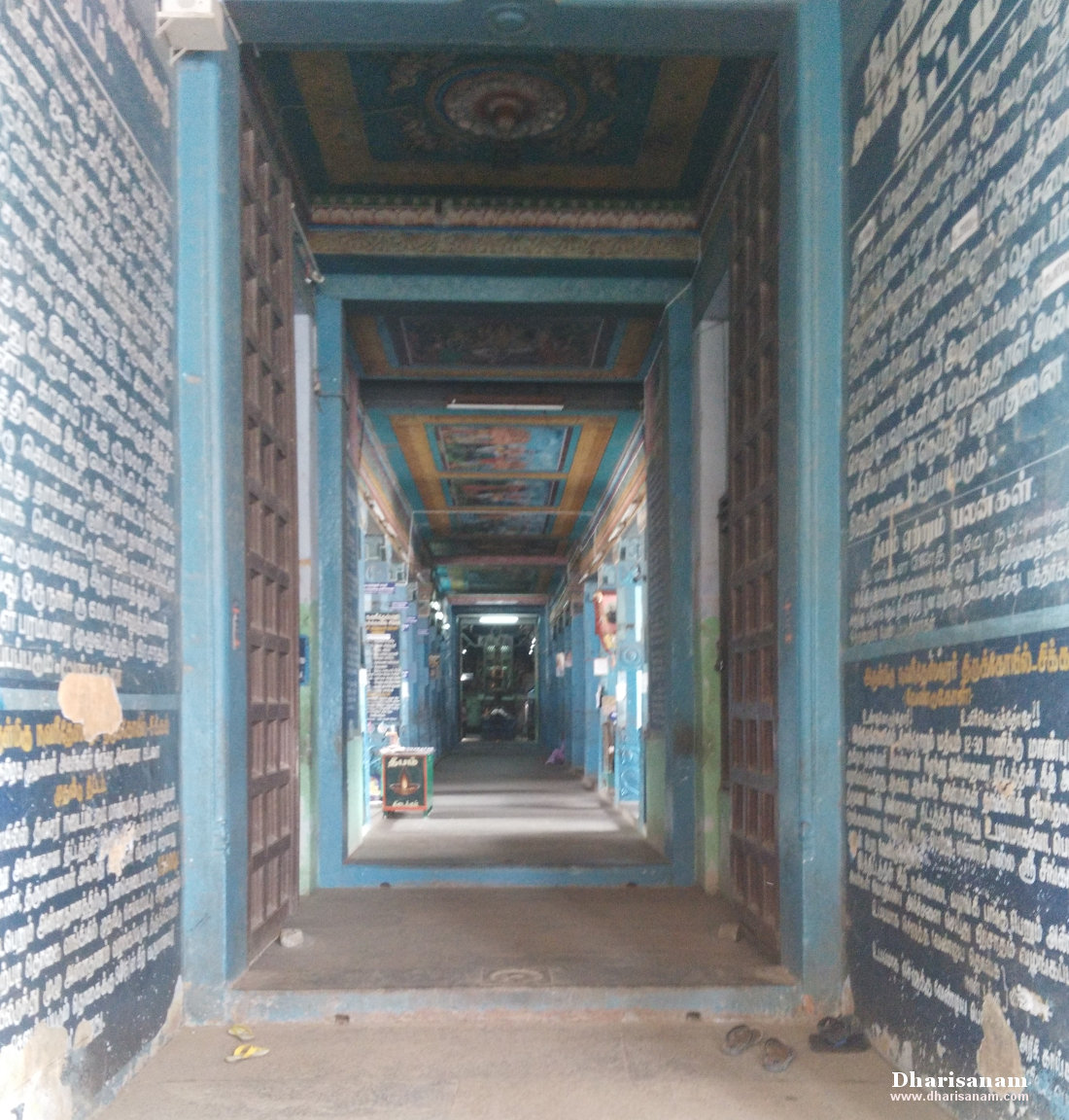
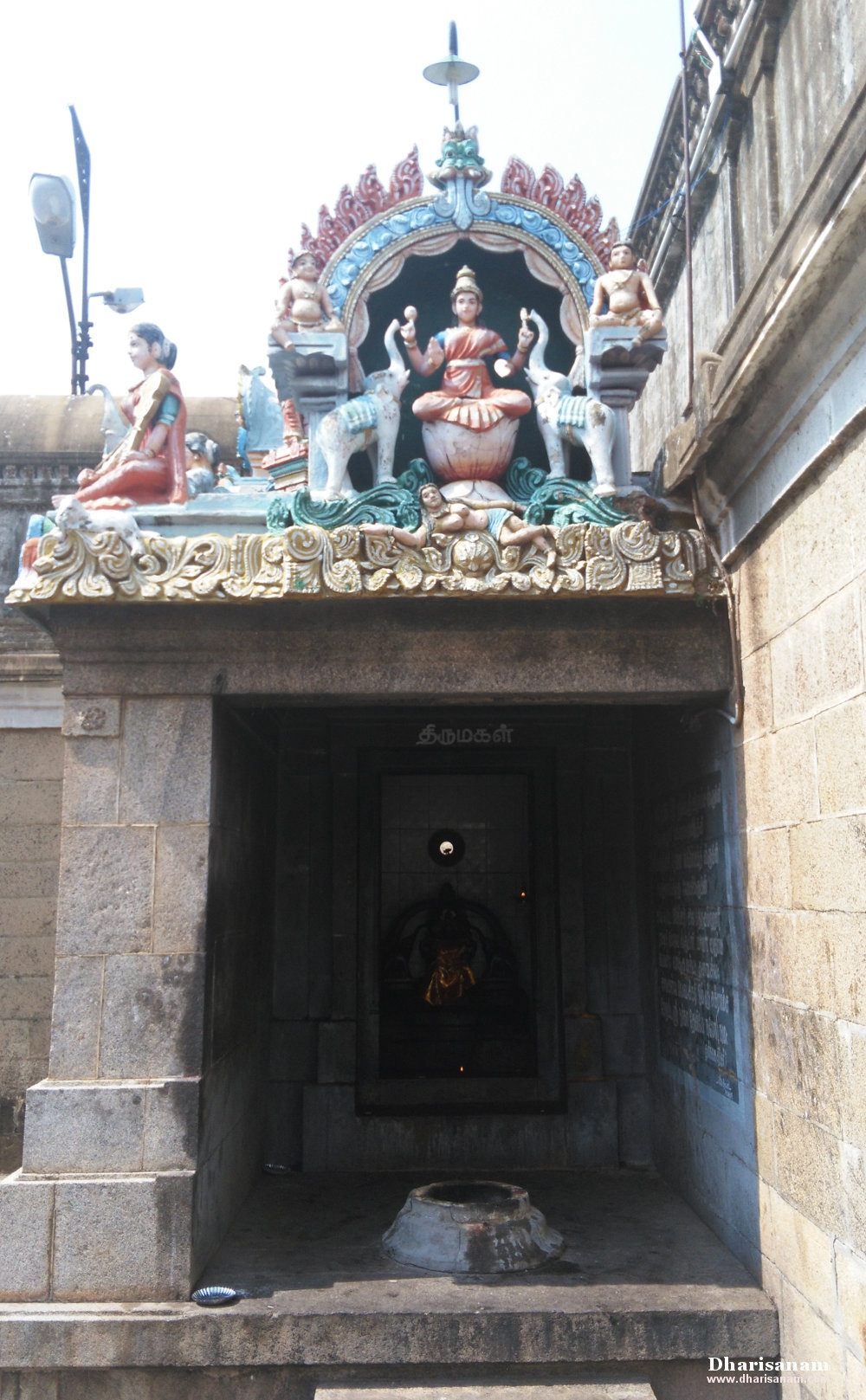
Salient Features
“Soorasamharam” festival in the Tamil month of Aippasi (Oct) (during Skanda Shashti) is celebrated here in a grand manner. Even today, one can see beads of sweat on the idol of Lord Murugan as he receives the Spear (“Vel”) from his mother, Goddess Parvathy.
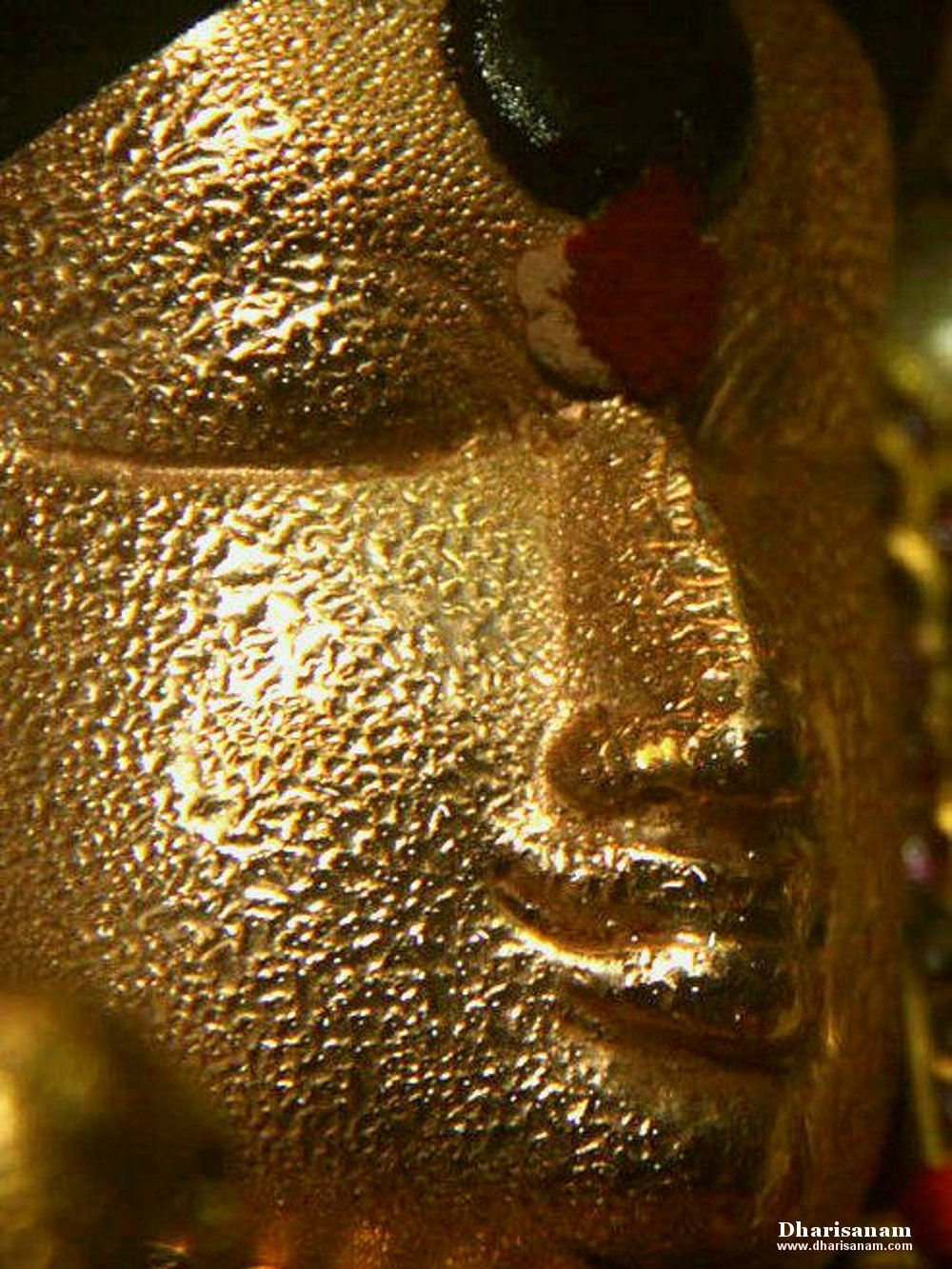
Behind the sanctum sanctorum, on either sides of Lord Lingothbavar, there are idols of Lord Mahavishnu and Lord Brahma in a worshipping posture. Devotees can enjoy the darshan of all the three lords (Trimurthys) – Brahma, Vishnu and Shiva. This is considered to be very auspicious.
It is believed that King Kochengat Chola built about 70 “Madakkoils”. The distinguishing feature of a Madakkoil is that it is not easily approachable by an elephant. He built these temples at an elevation and there are a few steps that need to be climbed before seeing the lord. Also, the sanctum sanctorum’s (Karpagragam) entrance is narrow such that no elephant can enter it.
It is very significant to note that in this temple, four lords (Lord Shiva, Lord Mahavishnu, Lord Singaravelar and Hanuman) are housed in a single complex.
There is a separate shrine for Lord Thiyagarajar here.
There is a separate shrine for “Sri Varada Aanjaneyar” on the North-western corner of this temple.
Saint Arunagirinadhar has sang songs in praise of Lord Murugan of this temple in his revered Thirupugazh.
A beautiful relief depicting Kamadhenu, Sage Vashistar and other sages worshiping the lord can be seen on the sanctum wall in the corridor.
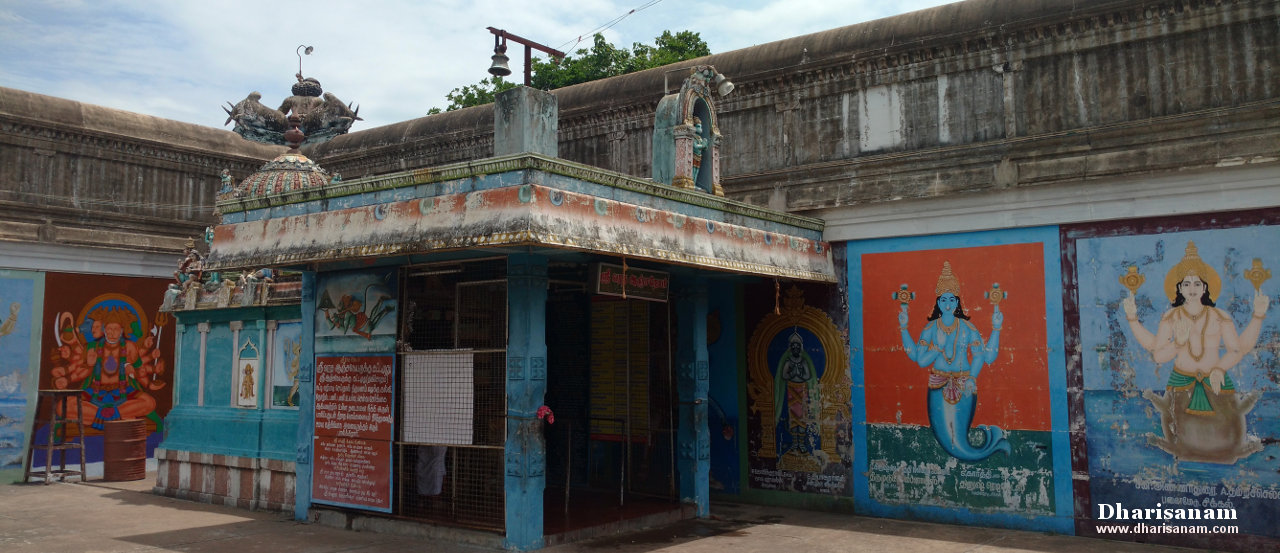

Greatness of this temple
Devotees believe that by reciting the “Satru Samhaara Tiri Sathai” prayer to Lord Singaravelar, they will be shielded from any obstacles caused by their enemies.
Lord Varada Aanjaneyar is very famous here. Devotees perform pooja to him with “Kattamudhu” (an offering of curd rice) to seek his blessings.
Important Festivals
The annual Brahmotsavam is celebrated here in the month of Chithirai (Apr-May).
“Soorasamharam” festival, during Skanda Shashti, in the Tamil month of Aippasi (Oct) is celebrated here in a grand manner.
Some of the other important festivals celebrated in this temple are –
Aani Thirumanjanam in the Tamil month of Aani (June-July),
Aadi Pooram in the Tamil month of Aadi (July-Aug),
Vinayakar Chaturthi in the Tamil month of Aavani (Aug-Sept),
Navarathri in the Tamil month of Purattasi (Sept-Oct),
Annabishekam in the Tamil month of Aippasi (Oct–Nov),
Thiru Karthikai in the Tamil month of Karthikai (Nov-Dec),
Thiruvadhirai in the Tamil month of Markazhi (Dec-Jan),
Makara Sankranthi in the Tamil month of Thai (Jan-Feb),
Shivrathri in the Tamil month of Masi (Feb-Mar) and
Panguni Uthiram in the Tamil month of Panguni (Mar-Apr).
Pradosham, Pournami and Sankatahara Chaturthi are also observed regularly
Temple Timings
From 06.00 AM to 12.00 Noon and from 04.00 PM to 09.00 PM.
Temple Address
Sri Navaneetheswarar Temple,
Sikkal Post,
Nagapattinam Taluk & District,
Tamil Nadu – 611 108.
Tele: +91- 4365 - 245 452, 245 350.
The temple priest Sri Siva Gurukkal can be contacted at +91- 86082 29929.
Sikkal Post,
Nagapattinam Taluk & District,
Tamil Nadu – 611 108.
Tele: +91- 4365 - 245 452, 245 350.
The temple priest Sri Siva Gurukkal can be contacted at +91- 86082 29929.
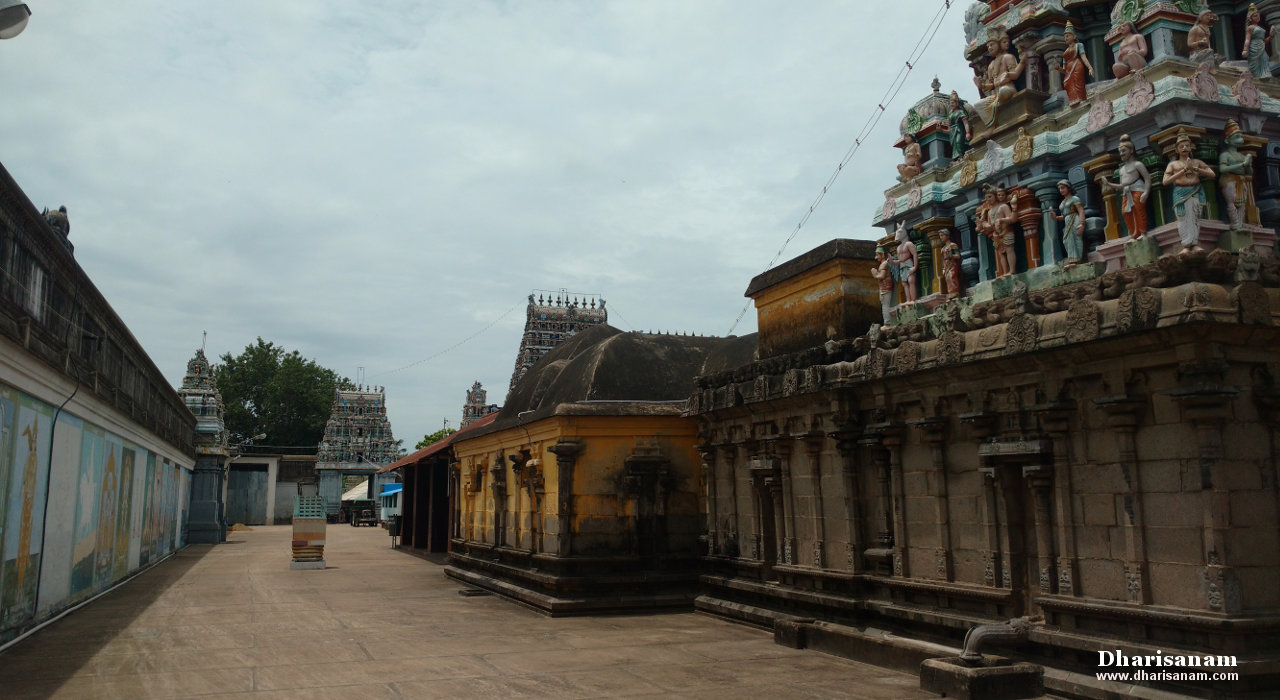

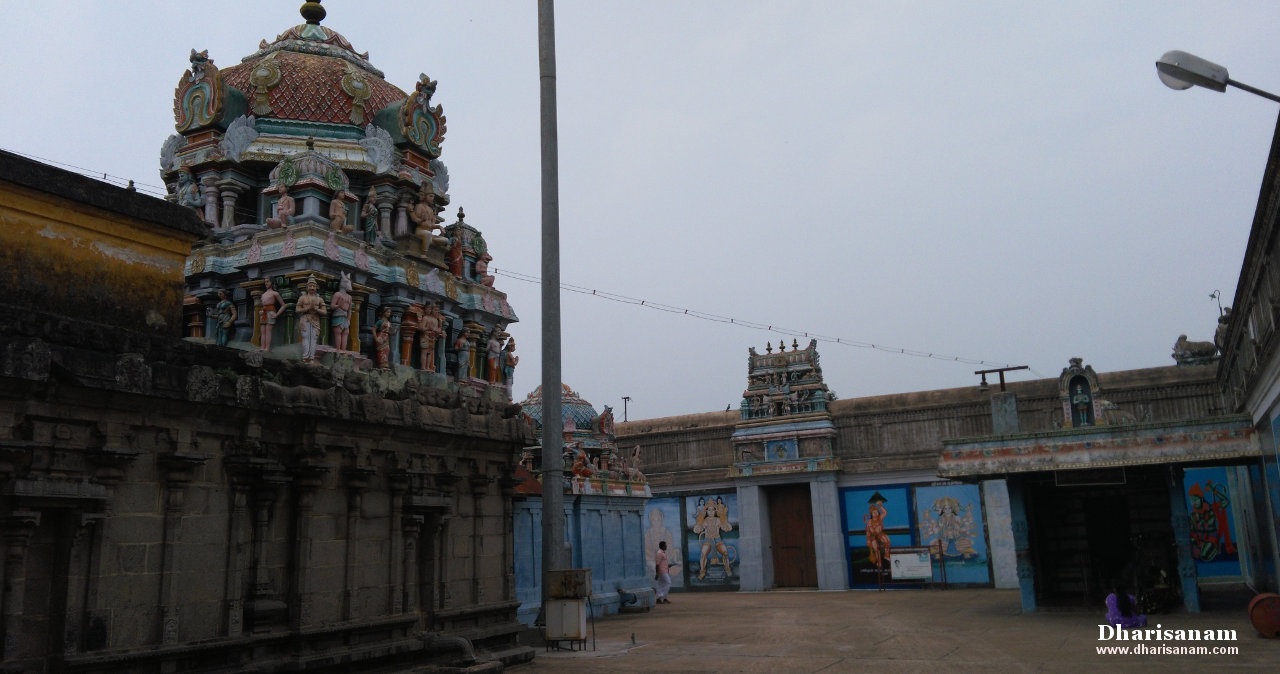


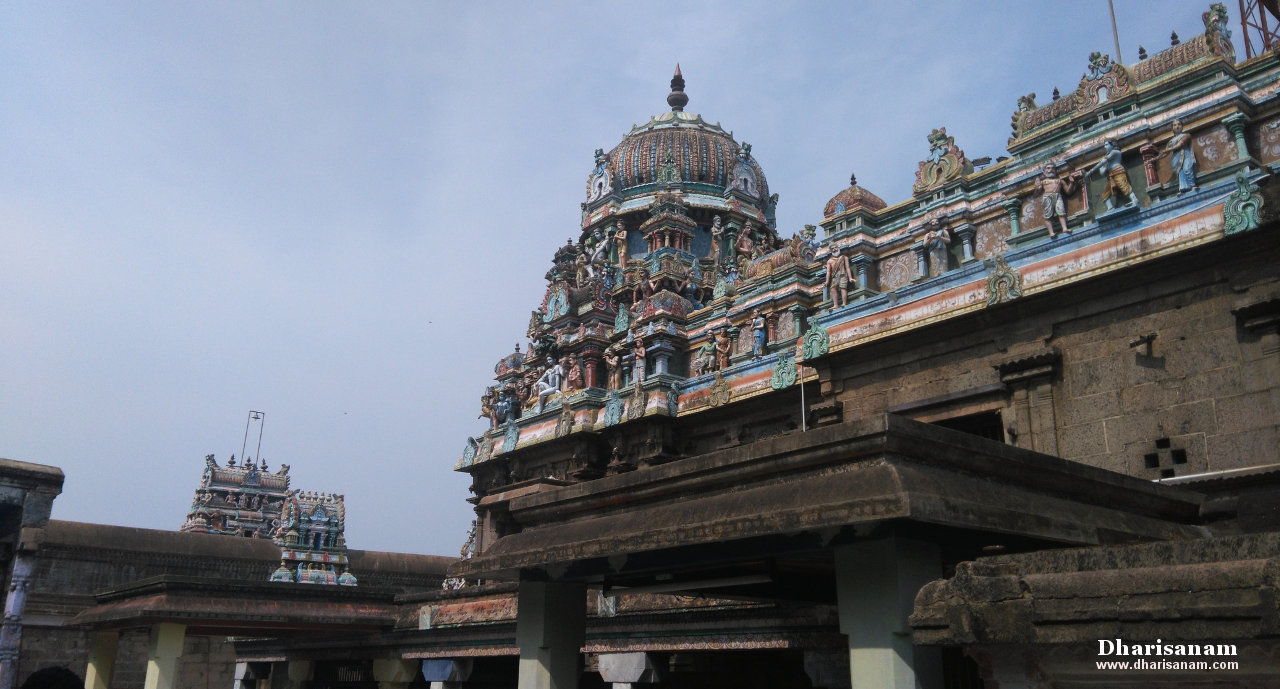
Pathigam (Hymn) with English transliteration and Tamil meaning.
Saint Thirugnanasambanthar visited this temple and sang this Pathigam.
Devotees visiting this temple should make it a practice to recite this Pathigam.
வானுலா வும்மதி வந்துலா வும்மதில் மாளிகைதேனுலா வும்மலர்ச் சோலைமல் குந்திகழ் சிக்கலுள்வேனல்வே ளைவிழித் திட்டவெண் ணெய்ப்பெரு மானடிஞானமா கந்நினை வார்வினை யாயின நையுமே.
“Vāṉulā vum'mathi vanthulā vum'mathil māḷikai
thēṉulā vum'malarch chōlaimal kunthikazh sikkaluḷ
vēṉalvē ḷaivizhith thiṭṭaveṇ ṇeypperu māṉaṭi
gñāṉamā kanniṉai vārviṉai yāyiṉa naiyumē”.
thēṉulā vum'malarch chōlaimal kunthikazh sikkaluḷ
vēṉalvē ḷaivizhith thiṭṭaveṇ ṇeypperu māṉaṭi
gñāṉamā kanniṉai vārviṉai yāyiṉa naiyumē”.
வானத்தே உலாவும் மதிவந்து பொருந்தும் மதில்கள் சூழ்ந்த
மாளிகைகளும், தேன்பொருந்திய மலர்களை உடைய சோலைகளும்
நிறைந்து விளங்கும் திருச்சிக்கல் என்னும் தலத்தில், வேனிற்
காலத்துக் குரியவனாகிய மன்மதனை நெற்றி விழியால் எரித்தழித்த
வெண்ணெய்ப் பெருமான் திருவடிகளை அவனருளால் விளைந்த
பதி ஞானத்தாலே நினைபவர் வினைகள் நைந்துஅறும்.
மடங்கொள்வா ளைகுதி கொள்ளும் மணமலர்ப் பொய்கைசூழ்திடங்கொள் மாமறை யோரவர் மல்கிய சிக்கலுள்விடங்கொள் கண்டத்து வெண்ணெய்ப்பெரு மானடி மேவியேஅடைந்து வாழுமடி யாரவர் அல்லல் அறுப்பரே.
“Maṭaṅkoḷvā ḷaikuthi koḷḷum maṇamalarp poykaichūzh
thiṭaṅkoḷ māmaṟai yōravar malkiya sikkaluḷ
viṭaṅkoḷ kaṇṭaththu veṇṇeypperu māṉaṭi mēviyē
aṭainthu vāzhumaṭi yāravar allal aṟupparē”.
thiṭaṅkoḷ māmaṟai yōravar malkiya sikkaluḷ
viṭaṅkoḷ kaṇṭaththu veṇṇeypperu māṉaṭi mēviyē
aṭainthu vāzhumaṭi yāravar allal aṟupparē”.
இளமை பொருந்திய வாளைமீன்கள் துள்ளிக் குதித்துக் களிக்கும் மணம்
பொருந்திய மலர்கள் நிறைந்த பொய்கைகள் சூழ்ந்ததும்
மனஉறுதியுடைய சிறந்த மறையவர்கள் நிறைந்துள்ளதுமான
சிக்கலில் எழுந்தருளிய, விடம் தங்கிய கண்டத்தினை உடைய
வெண்ணெய்ப் பெருமான் திருவடிகளை மனத்தால் விரும்பியவராய்
அடைந்து வாழும் அடியவர்கள் அல்லல்கள் நீங்குவர்.
நீலநெய் தல்நில விம்மல ருஞ்சுனை நீடியசேலுமா லுங்கழ னிவ்வள மல்கிய சிக்கலுள்வேலவொண் கண்ணியி னாளையொர் பாகன்வெண் ணெய்ப்பிரான்பாலவண் ணன்கழ லேத்தநம் பாவம்ப றையுமே.
“Nīlaney thalnila vim'mala ruñchuṉai nīṭiya
sēlumā luṅkazha ṉivvaḷa malkiya sikkaluḷ
vēlavoṇ kaṇṇiyi ṉāḷaiyor pākaṉveṇ ṇeyppirāṉ
pālavaṇ ṇaṉkazha lēththanam pāvampa ṟaiyumē”.
sēlumā luṅkazha ṉivvaḷa malkiya sikkaluḷ
vēlavoṇ kaṇṇiyi ṉāḷaiyor pākaṉveṇ ṇeyppirāṉ
pālavaṇ ṇaṉkazha lēththanam pāvampa ṟaiyumē”.
நீலநிறம் பொருந்திய நெய்தல் மலர்கள் விளங்கி மலரும் சுனைகள்
பலவற்றைக் கொண்டதும், சேல்மீன்கள் துள்ளும் வயல் வளம்
நிறைந்ததுமான சிக்கல் என்னும் திருப்பதியில் வேல் போன்ற ஒளிநிறைந்த
கண்களை உடைய உமையம்மையை ஒரு பாகமாகக் கொண்ட
வெண்ணெய்ப் பிரானாகிய பால்வண்ண நாதனின் திருவடிகளை ஏத்தின்
நம் பாவங்கள் நீங்கும்.
கந்தமுந் தக்கைதை பூத்துக் கமழ்ந்து சேரும்பொழிற்செந்துவண் டின்னிசை பாடல்மல் குந்திகழ் சிக்கலுள்வெந்தவெண் ணீற்றண்ணல் வெண்ணெய்ப்பி ரான்விரை யார்கழல்சிந்தைசெய் வார்வினை யாயின தேய்வது திண்ணமே.
“Kanthamun thakkaithai pūththuk kamazhnthu sērumpozhiṟ
senthuvaṇ ṭiṉṉisai pāṭalmal kunthikazh sikkaluḷ
venthaveṇ ṇītṟaṇṇal veṇṇeyppi rāṉvirai yārkazhal
sinthaisey vārviṉai yāyiṉa thēyvathu thiṇṇamē”.
senthuvaṇ ṭiṉṉisai pāṭalmal kunthikazh sikkaluḷ
venthaveṇ ṇītṟaṇṇal veṇṇeyppi rāṉvirai yārkazhal
sinthaisey vārviṉai yāyiṉa thēyvathu thiṇṇamē”.
மணம் முற்பட்டுச் சென்று பரவுமாறு தாழைகள் பூத்துக் கமழும்
பொழில்களில் வண்டுகள் செந்து என்னும் ஒருவகைப் பண்ணோடு பாடும்
பாடல்களைக் கொண்டு விளங்கும் சிக்கல் என்னும் தலத்தில், கற்பம்
செய்தமைத்த திருவெண்ணீற்றை அணிந்த தலைமையாளனாகிய
வெண்ணெய்ப்பிரானின் மணம் பொருந்திய திருவடிகளை நினைபவர்
வினைகள் தேய்வது திண்ணம்.
மங்குல்தங் கும்மறை யோர்கள்மா டத்தய லேமிகுதெங்குதுங் கப்பொழிற் செல்வமல் குந்திகழ் சிக்கலுள்வெங்கண்வெள் ளேறுடை வெண்ணெய்ப்பி ரானடி மேவவேதங்குமேன் மைசர தந்திரு நாளுந்த கையுமே.
“Maṅkulthaṅ kum'maṟai yōrkaḷmā ṭaththaya lēmiku
theṅkuthuṅ kappozhiṟ selvamal kunthikazh sikkaluḷ
veṅkaṇveḷ ḷēṟuṭai veṇṇeyppi rāṉaṭi mēvavē
thaṅkumēṉ maisara thanthiru nāḷuntha kaiyumē”.
மேகங்கள் தங்கும் மறையவரின் மாடவீடுகளையும் அவற்றின் அருகே
உயர்ந்து வளர்ந்துள்ள தென்னைகளை உடைய சோலைகளையும்
கொண்டு செல்வம் நிறைந்துவிளங்கும் சிக்கல் என்னும் தலத்தில்
சினம்மிக்க கண்களை உடைய வெள்ளேற்று ஊர்தியை உடைய
வெண்ணெய்ப் பெருமான் திருவடிகளை அடையின், மேலான
கதி கிடைத்தல் உறுதி. செல்வம் நாள்தோறும் பெருகும்.
வண்டிரைத் தும்மது விம்மிய மாமலர்ப் பொய்கைசூழ்தெண்டிரைக் கொள்புனல் வந்தொழு கும்வயற் சிக்கலுள்விண்டிரைத் தம்மல ராற்றிகழ் வெண்ணெய்ப் பெருமானடிகண்டிரைத் தும்மன மேமதி யாய்கதி யாகவே.
“Vaṇṭiraith thum'mathu vim'miya māmalarp poykaichūzh
theṇṭiraik koḷpuṉal vanthozhu kumvayaṟ sikkaluḷ
viṇṭiraith tham'mala rātṟikazh veṇṇeyp perumāṉaṭi
kaṇṭiraith thum'maṉa mēmathi yāykathi yākavē”.
theṇṭiraik koḷpuṉal vanthozhu kumvayaṟ sikkaluḷ
viṇṭiraith tham'mala rātṟikazh veṇṇeyp perumāṉaṭi
kaṇṭiraith thum'maṉa mēmathi yāykathi yākavē”.
வண்டுகள் ஒலிசெய்து சூழத் தேனை மிகுதியாகச் சொரியும் பெரிய
மலர்களைக் கொண்டுள்ள பொய்கைகள் சூழ்ந்ததும் தண்ணீர் பெருகி
ஓடும் வயல்களை உடையதுமான சிக்கற் பதியில், திருமால் பூசித்த
மலர்களால் திகழும் வெண்ணெய்ப் பெருமான் திருவடிகளைத்
தரிசித்துத் துதிசெய்து நற்கதி பெற ‘மனமே மதித்துப் போற்றுவாயாக’.
முன்னுமா டம்மதில் மூன்றுட னேயெரி யாய்விழத்துன்னுவார் வெங்கணை யொன்று செலுத்திய சோதியான் செந்நெலா ரும்வயற் சிக்கல்வெண் ணெய்ப்பெரு மானடிஉன்னிநீ டம்மன மேநினை யாய்வினை ஓயவே.
“Muṉṉumā ṭam'mathil mūṉtṟuṭa ṉēyeri yāyvizhath
thuṉṉuvār veṅkaṇai yoṉtṟu seluththiya chōthiyāṉ
sennelā rumvayaṟ sikkalveṇ ṇeypperu māṉaṭi
uṉṉinī ṭam'maṉa mēniṉai yāyviṉai ōyavē”.
மனமே! வானவெளியில் முற்பட்டுச் செல்லும் பெரிய அரக்கர்களின்
கோட்டைகள், எரியில் அழிந்து விழுமாறு விரைந்து செல்வதும் நீண்டதும்
கொடியதுமான கணை ஒன்றைச் செலுத்தி அழித்த ஒளிவடிவினனாகிய
செந்நெல்பொருந்திய வயல்கள் சூழ்ந்த சிக்கல் என்னும் பதியில் விளங்கும்
வெண்ணெய்ப் பெருமான் திருவடிகளைப் பலகாலும் எண்ணி அழுந்தி நம்
வினைகள் தேய்ந்தொழிய நினைவாயாக.
தெற்ற லாகிய தென்னிலங் கைக்கிறை வன்மலைபற்றி னான்முடி பத்தொடு தோள்கள் நெரியவேசெற்ற தேவன்நஞ் சிக்கல்வெண் ணெய்ப்பெரு மானடிஉற்று நீநினை வாய்வினை யாயின ஓயவே.
“Thetṟa lākiya theṉṉilaṅ kaikkiṟai vaṉmalai
patṟi ṉāṉmuṭi paththoṭu thōḷkaḷ neriyavē
setṟa thēvaṉnañ chikkalveṇ ṇeypperu māṉaṭi
utṟu nīniṉai vāyviṉai yāyiṉa ōyavē”.
patṟi ṉāṉmuṭi paththoṭu thōḷkaḷ neriyavē
setṟa thēvaṉnañ chikkalveṇ ṇeypperu māṉaṭi
utṟu nīniṉai vāyviṉai yāyiṉa ōyavē”.
தெளிந்த அறிவினை உடைய தென்இலங்கைக்கு இறைவனாகிய
இராவணன் ஈசன் எழுந்தருளிய கயிலைமலையைப் பெயர்க்க முற்பட்டுப்
பற்றிய அளவில் அவன் முடிகள் பத்தோடு இருபது தோள்களும் நெரியுமாறு
செற்ற தேவனாகிய நம் சிக்கல் வெண்ணெய்ப் பெருமான் திருவடிகளை,
மனமே! வினைகள் யாவும் தேய்ந்தொழிய நீ உற்று நினைவாயாக.
மாலி னோடரு மாமறை வல்லமு னிவனும்கோலி னார்குறு கச்சிவன் சேவடி கோலியும்சீலந் தாமறி யார்திகழ் சிக்கல்வெண் ணெய்ப்பிரான்பாலும் பன்மலர் தூவப் பறையும்நம் பாவமே.
“Māli ṉōṭaru māmaṟai vallamu ṉivaṉum
kōli ṉārkuṟu kachchivaṉ sēvaṭi kōliyum
sīlan thāmaṟi yārthikazh sikkalveṇ ṇeyppirāṉ
pālum paṉmalar thūvap paṟaiyumnam pāvamē”.
kōli ṉārkuṟu kachchivaṉ sēvaṭi kōliyum
sīlan thāmaṟi yārthikazh sikkalveṇ ṇeyppirāṉ
pālum paṉmalar thūvap paṟaiyumnam pāvamē”.
திருமாலும் அரியமறை வல்ல நான்முகனும் சிவபிரானின் அடிமுடிகளைக்
காண ஏனமும் அன்னமுமாய வடிவெடுத்து முயன்றனர். முயன்றும்
அப்பெருமானின் உண்மைத்தன்மையை உணராராயினர். அவ்விறைவன்
சிக்கலில் வெண்ணெய்ப் பிரான் என்ற திருப்பெயரோடு
வீற்றிருந்தருளுகின்றான். அவனைப் பாலபிடேகம்புரிந்து பல
மலர்களைத்தூவி வழிபடின் நம் பாவங்கள் நீங்கும்.
பட்டை நற்றுவ ராடையி னாரொடும் பாங்கிலாக்கட்ட மண்கழுக் கள்சொல்லி னைக்கரு தாதுநீர்சிட்டன் சிக்கல்வெண் ணெய்ப்பெரு மான்செழு மாமறைப்பட்டன் சேவடி யேபணி மின்பிணி போகவே.
“Paṭṭai natṟuva rāṭaiyi ṉāroṭum pāṅkilāk
kaṭṭa maṇkazhuk kaḷsolli ṉaikkaru thāthunīr
siṭṭaṉ sikkalveṇ ṇeypperu māṉsezhu māmaṟaip
paṭṭaṉ sēvaṭi yēpaṇi miṉpiṇi pōkavē”.
kaṭṭa maṇkazhuk kaḷsolli ṉaikkaru thāthunīr
siṭṭaṉ sikkalveṇ ṇeypperu māṉsezhu māmaṟaip
paṭṭaṉ sēvaṭi yēpaṇi miṉpiṇi pōkavē”.
நல்ல மருதந்துவர்ப்பட்டையின் சாறு ஊட்டப் பட்ட ஆடையை அணிந்த
சாக்கியரும், முறையற்ற பண்புகளைக் கொண்ட உடற்கட்டுடைய
கழுவேறுதற்குரிய சமணர்களும் சொல்லும் பொய்யுரைகளைக்
கருதாது நீர் மேலானவனும், சிக்கலில் வெண்ணெய்ப் பெருமானாக
விளங்குபவனும் ஆகிய செழுமையான சிறந்த வேதங்களில் வல்ல
புலவனாகிய சிவபிரான் சேவடிகளையே பிணிகள் தீரப்பணிவீர்களாக.
கந்த மார்பொழிற் காழியுள் ஞானசம் பந்தன்நல்செந்தண் பூம்பொழிற் சிக்கல்வெண் ணெய்ப்பெரு மானடிச்சந்த மாச்சொன்ன செந்தமிழ் வல்லவர் வானிடைவெந்த நீறணி யும்பெரு மானடி மேவரே.
“Kantha mārpozhiṟ kāzhiyuḷ gñāṉasam banthaṉnal
senthaṇ pūmpozhiṟ sikkalveṇ ṇeypperu māṉaṭich
chantha māchchoṉṉa senthamizh vallavar vāṉiṭai
ventha nīṟaṇi yumperu māṉaṭi mēvarē”.
senthaṇ pūmpozhiṟ sikkalveṇ ṇeypperu māṉaṭich
chantha māchchoṉṉa senthamizh vallavar vāṉiṭai
ventha nīṟaṇi yumperu māṉaṭi mēvarē”.
மணம் பொருந்திய சோலைகள் சூழ்ந்த காழிப் பதியுள் தோன்றிய
ஞானசம்பந்தன் செவ்விய தண்மையான அழகிய பொழில்கள் சூழ்ந்த
சிக்கலில் விளங்கும் வெண்ணெய்ப் பெருமான் திருவடிகளைப் போற்றி
இசையோடு பாடிய இச்செந்தமிழ்ப் பதிகத்தை ஓதவல்லவர்
சிவலோகத்தில் கற்பமுறையில் உண்டான திருவெண்ணீற்றை
அணிந்துள்ள சிவபெருமான் திருவடிகளை மேவுவர்.







